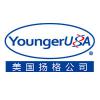企业简介
旭月(北京)科技有限公司(http://xuyue.net),是2005年创立于中关村科技园区的国家高新技术企业。创始人许越先生,曾服务于美国航空航天局NASA,是现代“非损伤微测技术(NMT)”奠基人,动态分离子组学(imOmics)创始人,NMT产业化倡导者,美国扬格公司(http://youngerusa.com)现任总裁。
联系方式
电话:010-82622628
公司地址:北京市海淀区苏州街49-3号盈智大厦601
邮 编:100080......
南农:铜抑制水稻硝酸盐吸收 | NMT植物氮营养创新科研平台
上一篇 /
下一篇 2020-05-09 16:04:09
NMT作为生命科学底层核心技术,是建立活体创新科研平台的必备技术。2005年~2020年,NMT已扎根中国15年。2020年,中国NMT销往瑞士苏黎世大学,正式打开欧洲市场。

研究使用平台:NMT植物氮营养创新科研平台
期刊:Ecotoxicology and Environmental Safety
主题:铜抑制水稻**盐吸收
标题:Excess copper inhibits the growth of rice seedlings by decreasing uptake of nitrate
影响因子:4.527
检测指标:NO3-流速
检测样品:根
NO3-流实验处理方法:
水稻幼苗在氮环境中培养7天后,在0.2μmolL-1 CuSO4和10μmolL-1 CuSO4的无氮环境中处理15天
NO3-流实验测试液成份:
0.1mM **铵及氯化钙,pH5.5
作者:南京农业大学陈晨、霍垲
中文摘要(谷歌机翻)
铜(Cu)的毒性对植物的生长具有有害作用,而不同的氮(N)形式对植物对重金属的吸收和积累的影响也大不相同。然而,目前尚不清楚过量的铜如何抑制不同氮素形态下水稻幼苗的生长。在这里,我们研究了铜毒性抑制不同形式氮素供应的水稻生长的机理。
在0.2μmolL-1 CuSO4或0.2μmolL-1的养分溶液中,水稻幼苗生长在含有0.81 mmol L-1
N的营养液中,如铵盐(NH4+),**盐(NO3-)和NH4++ NO3--或无氮(0 N)。10μmolL-1
CuSO4。在供给有NO3-的植物中,在过量的Cu下对芽生长的抑制作用比NH4
+更为明显。芽中较高的Cu浓度不会诱导这种抑制作用。单独施用NO3-可使溶液的pH值增加到6.2,但单独施用NH4+和NH4++
NO3-可以将溶液的pH值分别降低到4.0和4.2。
溶液pH值的增加降低了单独添加NO3-的水稻芽中的Cu浓度。铜的毒性降低了单独提供NO3-的水稻幼苗中的NO3-浓度,但增加了提供NH4+或NH4+
+
NO3-的植物中NH4+的浓度。通过对净NO3-通量和NO3-同化酶活性的分析,高Cu水平降低了根部对NO3-的吸收。在过量的铜下,OsNPF6.5,OsNPF2.2和OsNPF2.4基因的转录水平受到抑制,而OsNRT2.1,OsNRT2.2和OsNAR2.1的根部升高。
总之,铜毒性通过调节NO3-转运蛋白基因的表达水平来抑制NO3-的吸收和向上移位。当氮以NO3-的形式供应时,NO3-和总氮浓度的降低会降低水稻幼苗的茎生长。因此,在铜胁迫下,供应有NO3-的水稻幼苗的茎生物量要低于含有NH4 +的水稻。

Effect of Cu on the net NO3− fluxes at the root hair
zone of rice. Plants were grown under hydroponic conditions supplied
with N as NO3− for 7 days, and then were incubated in s lution without N
in the presence of 0.2 μmol L−1 CuSO4 (CK) and10 μmol L−1 CuSO4 (Cu).
Photographs of the measuring point (A, B) and the mean fluxes of NO3−
within the measu ing period (C) are shown. Data are means of at least 6
replicates.

联盟推荐抗疫产品之一:新冠肺炎中医治疗NMT创新平台
英文摘要
Copper (Cu) toxicity has a deleterious effect on
plant growth, and different nitrogen (N) forms have significantly
different impacts on the uptake and accumulation of heavy metals by
plants. However, it remains unclear how excess Cu inhibits the growth of
rice seedlings under different N forms. Here, we examined the
mechanism of Cu toxicity inhibiting the growth of rice supplied with
different N forms.
Rice seedlings were grown in a nutrient solution with 0.81 mmol L−1 N,
as ammonium (NH4+), nitrate (NO3−) and NH4++ NO3−, or without N (0 N)
in the presence of 0.2 μmol L−1 CuSO4 or 10 μmol L−1 CuSO4. The
inhibition of shoot growth under excess Cu was more pronounced in
plants that were supplied with NO3− than NH4+; such inhibition was not
induced by higher Cu concentration in shoots. Applied with NO3− alone
increased solution pH value up to 6.2, but supplied with NH4+ alone and
NH4++NO3− decreased solution pH value to 4.0 and 4.2, respectively.
The increment of solution pH reduced Cu concentration in shoots of rice
supplied with NO3 − alone. Copper toxicity decreased NO3−
concentrations in rice seedlings that were supplied with NO3− alone but
increased the NH4+ concentrations in plants that were supplied with
NH4+ or NH4+ + NO3−. High Cu levels reduced the uptake of NO3− in roots
by the analysis of net NO3− flux and NO3− assimilation enzymes
activity. Under excess Cu, the transcript. levels of OsNPF6.5, OsNPF2.2
and OsNPF2.4 genes were suppressed, while OsNRT2.1, OsNRT2.2 and
OsNAR2.1 were raised in roots.
In conclusion, Cu toxicity inhibits NO3− uptake and upward
translocation by modulating the expression level of NO3− transporter
genes. The reduction in the concentrations of NO3− and total N
decreased shoot growth of rice seedlings when N was supplied as NO3−.
Hence, rice seedlings supplied with NO3− had lower shoot biomass than
those with NH4+ under Cu stress.
导入论坛收藏
分享给好友
推荐到圈子
管理
举报
TAG:




